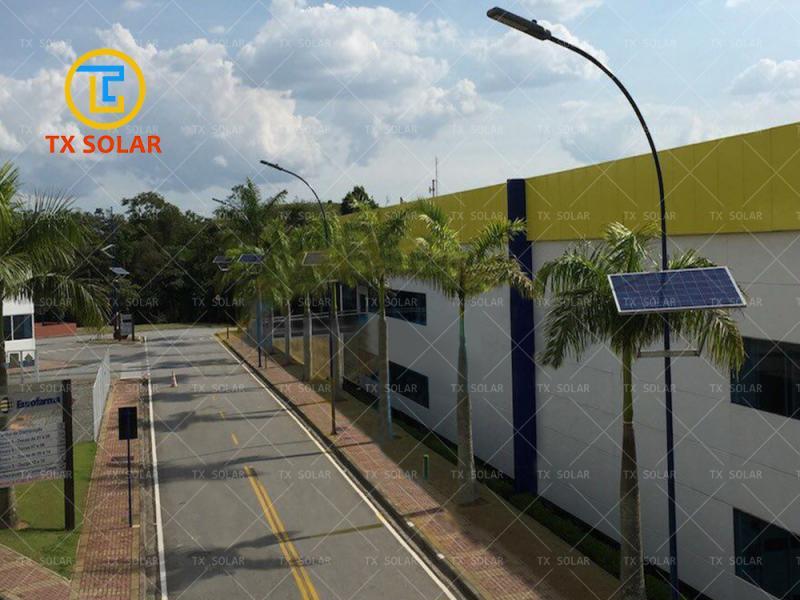Generally speaking, the installation angle and tilt angle of the solar panel of the solar street light have a great influence on the power generation efficiency of the photovoltaic panel. In order to maximize the use of sunlight and improve the power generation efficiency of the photovoltaic panel, the installation angle and tilt angle of the solar panel need to be set reasonably. Let’s take a look now with street light factory TIANXIANG.
Installation angle
Usually, the installation angle of the solar panel should be consistent with the latitude, so that the photovoltaic panel is as perpendicular to the sunlight as possible. For example, if the latitude of the location is 30°, then the installation angle of the photovoltaic panel should be 30°.
Tilt angle
The tilt angle of the solar panel changes with the season and geographical location. In winter, the sun is lower in the sky, so the tilt angle needs to be increased to make the photovoltaic panel as perpendicular to the sunlight as possible; in summer, the sun is higher in the sky, and the tilt angle needs to be reduced. Normally, the optimal tilt angle of solar panels can be calculated by the following formula:
Optimal tilt angle = latitude ± (15° × seasonal correction factor)
Seasonal correction factor: Winter: 0.1 Spring and Autumn: 0 Summer: -0.1
For example, if the latitude of the location is 30° and it is winter, the optimal tilt angle of the solar panel is: 30° + (15° × 0.1) = 31.5°It should be noted that the above calculation method is only applicable to general situations. During actual installation, it may be necessary to make fine adjustments based on factors such as local climate and building shading. In addition, if conditions permit, consider using an adjustable mounting bracket to adjust the installation angle and tilt angle of the solar panel in real time according to the season and the position of the sun, thereby further improving the power generation efficiency.
Solar panel installation
1) Clarify the positive and negative poles
First, you must clarify the positive and negative poles of the solar panel. When making a series electrical connection, the “+” pole plug of the previous component is connected to the “-” pole plug of the next component, and the output circuit must be correctly connected to the device.
Do not make a mistake in polarity, otherwise the solar panel may not be charged. In this case, the indicator light of the controller will not light up. In severe cases, the diode will be burned out, affecting the service life of the solar panel. Avoid wearing metal jewelry when installing solar panels to prevent the positive and negative poles of the solar panel from contacting metal objects, causing short circuits, or even fire or explosion.
2) Wire requirements
First, it is recommended to use insulated copper wires instead of aluminum wires. It is better than the latter in terms of conductivity and resistance to electrochemical corrosion, and it is not as easy to catch fire as aluminum wires. It is more efficient and safer to use.
Secondly, the polarity of the wire connection is different, and the color is preferably different, which is convenient for installation and maintenance; the connection is firm, do not increase the contact resistance, and the wire is as short as possible to reduce the internal resistance of the line, so as to better ensure its working efficiency.
In the insulation wrapping layer of its joint part, one should consider meeting the insulation strength, and the other should consider its weather resistance requirements; in addition, according to the ambient temperature during installation, a margin should be left for the temperature parameters of the wire.
If you need to know more relevant knowledge, please continue to pay attention to the street light factory TIANXIANG, and more exciting content will be presented to you in the future.
Post time: Apr-17-2025

